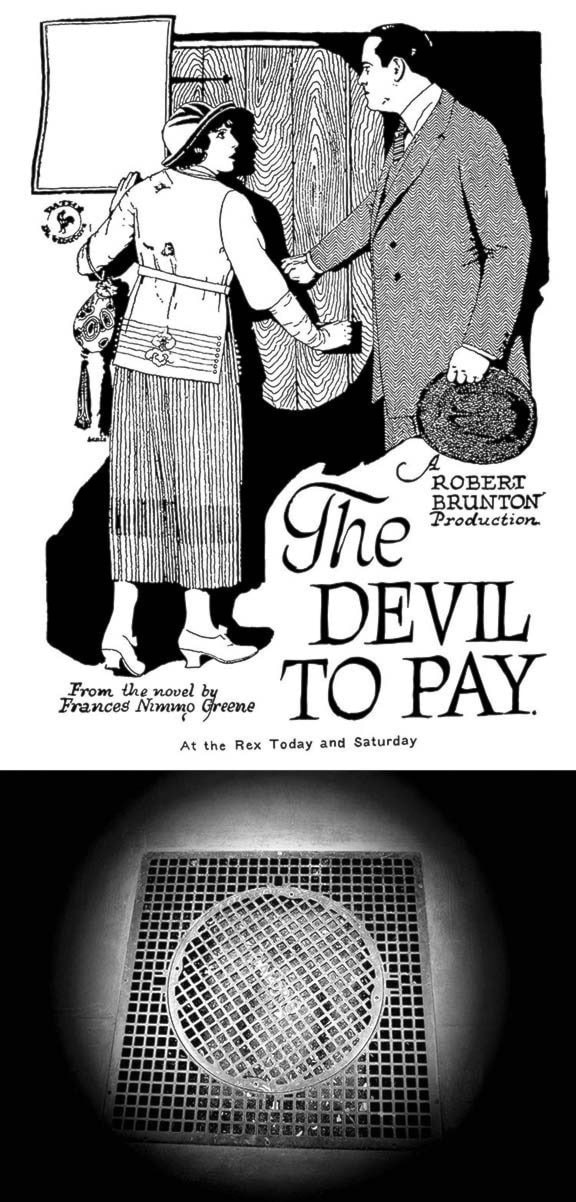Jim Cameron
November 27, 1913, marked the first anniversary of the opening of the Rex Theatre at No. 17, Norbury Avenue.
Built by local contractor George Leask as the first true movie theatre in the city, theatre manager A. A. Johnson, on behalf of the Johnson Brothers, marked the occasion by thanking the public of Cranbrook for their patronage of the past year.
By that time the film industry, only a few years earlier little more than a novelty, had made great strides. The year 1913 saw the young community of Hollywood boasting over 15 film studios featuring young stars such as Lon Chaney, John Barrymore, Lillian Gish and Harold Lloyd. On a local note, the Rex Theatre inaugurated numerous features in its first year including proper ventilation with numerous well-lit exits, an asbestos-lined-fire-proof projection booth, the local four-piece Rex Orchestra — the highest paid orchestra in the Kootenays, according to Mr. Johnson — accompanying seven nightly shows and four matinees per week, and, perhaps most notably, a new projection machine which converted AC electric current to DC, thus doing away with the constant "flicker" of the movies on the screen.
A thirty-foot electric sign on the front of the Rex added a "citified appearance" to Norbury Avenue and the crowds continued to pour in.
The Rex Orchestra broadened its bases by playing dances and socials at other venues and thus became among the first (and possibly among the last) steadily employed bands in Cranbrook. Highest paid or not, they were replaced the following year by Mrs. Wallinger's Orchestra, not too long after local Sheriff Morris served papers on the Johnson Brothers on behalf of owner George Leask, demanding unpaid rent. It appears things were not all rosy in movie land, certainly not for A.A. Johnson.
Things were patched up the following month, just in time for Mr. Johnson to have his hands severely bitten while attempting to remove a dog from the premises. In August, 1915, Johnson was accused of indecent assault upon his 14-year-old daughter and, unwilling or unable to provide the $900 bail, found himself languishing in a jail cell just up the block in City Hall. The anger and disgust felt by many did not seem to extinguish the public desire to catch the latest flick.
Mr. Johnson disappeared from the scene soon thereafter, replaced by various managers over the ensuing years. The theatre also saw frequent use for daytime meetings such as occurred in November, 1914, when Dr. Spencer addressed a male-only gathering on "Cranbrook's Four Greatest Institutions." Sadly, the institutions in question were not named. They may have included the fairer sex, one way or another.
Throughout the ensuing war years the theatre saw many entertainments and fund-raisers in honour of the boys already overseas or headed in that direction. Empire (Victoria) Day traditionally saw a large gathering of children in front of the old courthouse at the east end of Baker Street, where they were addressed by prominent men of the day and then marched to the Rex for a free patriotic movie following which they each received a bag of nuts, candy and oranges, a rare treat for the day.
In May, 1921, A. C. Blaine of the recently formed Cranbrook Theatres Ltd., announced the construction of the Star Theatre at No. 25, Norbury Avenue. The Rex responded by undertaking a number of renovations but it was, in the end, to no avail. The Star Theatre (now East Kootenay Realty) opened on October 10, 1921.
When the Rex Theatre was built in 1912, it was described by the local newspaper as "the best moving picture house in the west." That was not the case by early 1922, when the neighbouring Star Theatre began featuring all the first-run movies, leaving the Rex to show lesser known titles. It heralded the final credits for the Rex; the same modus operandi, it is worth noting, that saw the closure of the Star Theatre when the Armond Theatre was built, and the closure of the Armond when the movie theatre at the Tamarack Mall was built. No matter the price of popcorn, it is safe to say that there has never been room for two movie theatres in Cranbrook.
In October, 1922, the struggling Rex Theatre was purchased by Mr. Blaine's company and immediately closed down, the final show taking place on October 7.
The year 1922 may have been curtains for Cranbrook's first movie house but not so for the building. Following the closure of the Rex Theatre the place sat idle until 1924, when the Cranbrook Co-Operative Society grocery store moved in. They conducted business in the former theatre until the spring of 1929, at which point Quality Grocery purchased their entire stock and themselves opened for service, becoming a popular fixture on the block for the next 21 years. Robinson Stores took over the building from 1951 to 1955, at which time they moved to Baker Street. The building was then occupied by Hume Electric for many years. Most recently it has been the home of Muriel and Jane's General Store until their move to 9th Avenue last summer.
As with many of Cranbrook's oldest business buildings, it would take a large book to cover the complete history of the former Rex Theatre and the people who passed through. Suffice to say, if you enter the recently opened 1710 Workplace on Norbury Avenue, you have become yet another flickering image caught by the lens of Cranbrook's past.
janusthenandnow@shaw.ca
